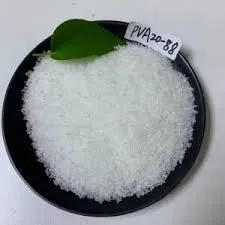Hydroxypropyl Methyl Cellulose (HPMC) A Versatile Polymer in Modern Applications
Hydroxypropyl Methyl Cellulose (HPMC) is a semi-synthetic polymer derived from natural cellulose. It is widely recognized for its diverse properties and has become an essential ingredient in various industries, including pharmaceuticals, food, construction, and personal care. The unique characteristics of HPMC contribute to its multifunctionality, making it a valuable compound in both commercial and industrial applications.
Hydroxypropyl Methyl Cellulose (HPMC) A Versatile Polymer in Modern Applications
In the food industry, HPMC is employed as a thickening agent and emulsifier. It enhances the texture and mouthfeel of products such as sauces, dressings, and dairy products. Its ability to retain moisture is particularly beneficial in baked goods, improving shelf life and maintaining freshness by preventing staleness. Furthermore, HPMC is considered a safe food additive with a strong regulatory approval status, allowing consumers to enjoy food products that incorporate it without concerns over safety.
hydroxypropyl methyl cellulose(hpmc)

The construction industry has also recognized the value of HPMC, particularly in the formulation of mortars and adhesives. Its water-retention capabilities help improve the workability of cement-based materials, ensuring that they remain workable for longer periods. This feature is crucial for large-scale construction projects where delays can significantly impact timelines. Additionally, HPMC enhances adhesion properties, contributing to better overall performance in construction applications.
In personal care products, HPMC is used for its thickening and film-forming properties. It enhances the texture of creams, lotions, and gels, improving user experience. Its gentle nature makes it suitable for sensitive skin, leading to its inclusion in a variety of cosmetic formulations. Furthermore, due to its non-toxic and biodegradable profile, HPMC is increasingly favored in natural and organic personal care products, aligning with the growing consumer demand for sustainable and eco-friendly solutions.
The versatility of HPMC extends to the realm of 3D printing and the production of bioplastics. As the world increasingly shifts towards sustainable materials, HPMC has emerged as a promising candidate for developing biodegradable plastics. Its compatibility with various materials and ability to enhance the mechanical properties of bioplastics make it an exciting area of research and industry application.
In conclusion, Hydroxypropyl Methyl Cellulose stands out as a multifaceted polymer that serves a vast array of applications across several industries. Its unique properties, including water retention, emulsification, and film-forming capabilities, enable it to function effectively in pharmaceuticals, food products, construction materials, and personal care formulations. As innovation continues to drive new applications and as sustainability becomes a focal point for industries worldwide, HPMC is poised to play an increasingly critical role in future developments. Its ability to meet both functional and ecological needs underscores its importance in a rapidly evolving landscape, aligning with the ongoing quest for efficient, sustainable, and effective materials.






